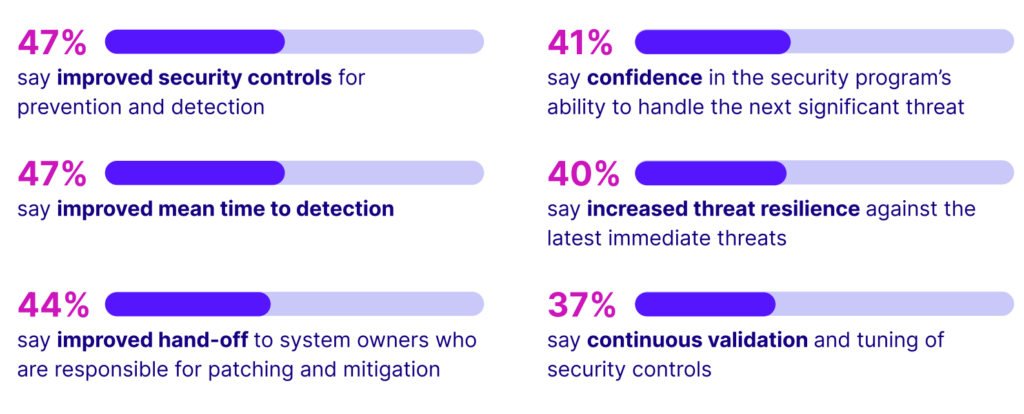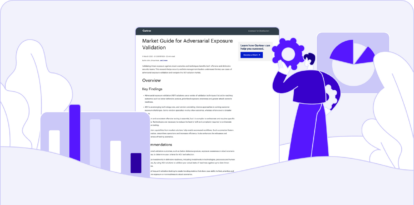Why Threat Exposure Validation is Critical for Cybersecurity in 2025

Introducing the Threat Exposure Validation Impact Report 2025
Cybersecurity needs to evolve — and fast.
The threats we face today don’t just happen more frequently. They’re faster, more sophisticated, and often automated. Relying on periodic penetration testing and reactive security models isn’t enough anymore.
We wanted to take the pulse of the cybersecurity world to see how those in the trenches are dealing with these new realities. To that end, Cymulate surveyed over 1,000 CISOs, SecOps professionals, red teamers and blue teamers from around the world.
The results are in, and they’re eye-opening. They show that the next evolution of combating to attack methods is threat exposure validation.
Our Threat Exposure Validation Impact Report 2025 reveals that organizations embracing proactive, continuous and AI-powered validation processes are already seeing real-world benefits — from faster detection times to reduced breach rates.
At the same time, the report highlights growing challenges, particularly around cloud security, resource constraints and the limitations of manual testing.
Key Findings from the 2025 Threat Exposure Validation Report
🔐 Threat Exposure Validation is Becoming Essential
71% of security leaders agree that threat exposure validation critical to their security strategy in 2025. Organizations running exposure validation monthly report a 20% reduction in breaches, plus improvements in detection, resilience, and security control optimization.
Here are the top benefits of exposure validation, according to respondents:

☁️ Cloud Environments Remain a Blind Spot
61% of cyber leaders say their teams struggle to identify and remediate cloud exposures, and only 9% are running daily validation in these environments. That’s a major gap considering how central cloud infrastructure has become.
🤖 Automation and AI Are Reshaping the Security Landscape
AI is already proving its value. Security pros report they can test 230x more threats using automation compared to manual methods and organizations using AI take 24 fewer hours to validate against new threats. Yet, many still face challenges like limited testing frequency and manual process gaps.
📉 CISO Confidence is Low — and Breaches Are Up
Confidence in traditional cybersecurity processes is eroding. Many leaders are questioning whether their current tools and strategies can keep up with today’s threat environment — and they’re turning to exposure validation as a solution.
💡 Exposure Management Is Becoming a Top Priority
Nearly all surveyed (98%) say they plan to invest in exposure management, with 89% planning to do so within the next year. But limited resources and internal capacity remain obstacles to timely remediation.
Get the Lowdown on Threat Exposure Validation
Threat exposure validation is no longer a “nice to have.” It’s a critical pillar of modern cybersecurity. With the scale and complexity of today’s threat landscape, organizations need more than one-off testing. They need continuous, automated validation powered by AI to stay ahead.
In the coming weeks and months, we’ll explore more of the critical concepts covered in the report here on our blog. These are complex issues, and we look forward to sharing more thoughts here soon.
But in the meantime, you can get the full picture now at your fingertips. Download the full Threat Exposure Validation Impact Report 2025 to see how security teams are adapting — and how your organization can do the same.


